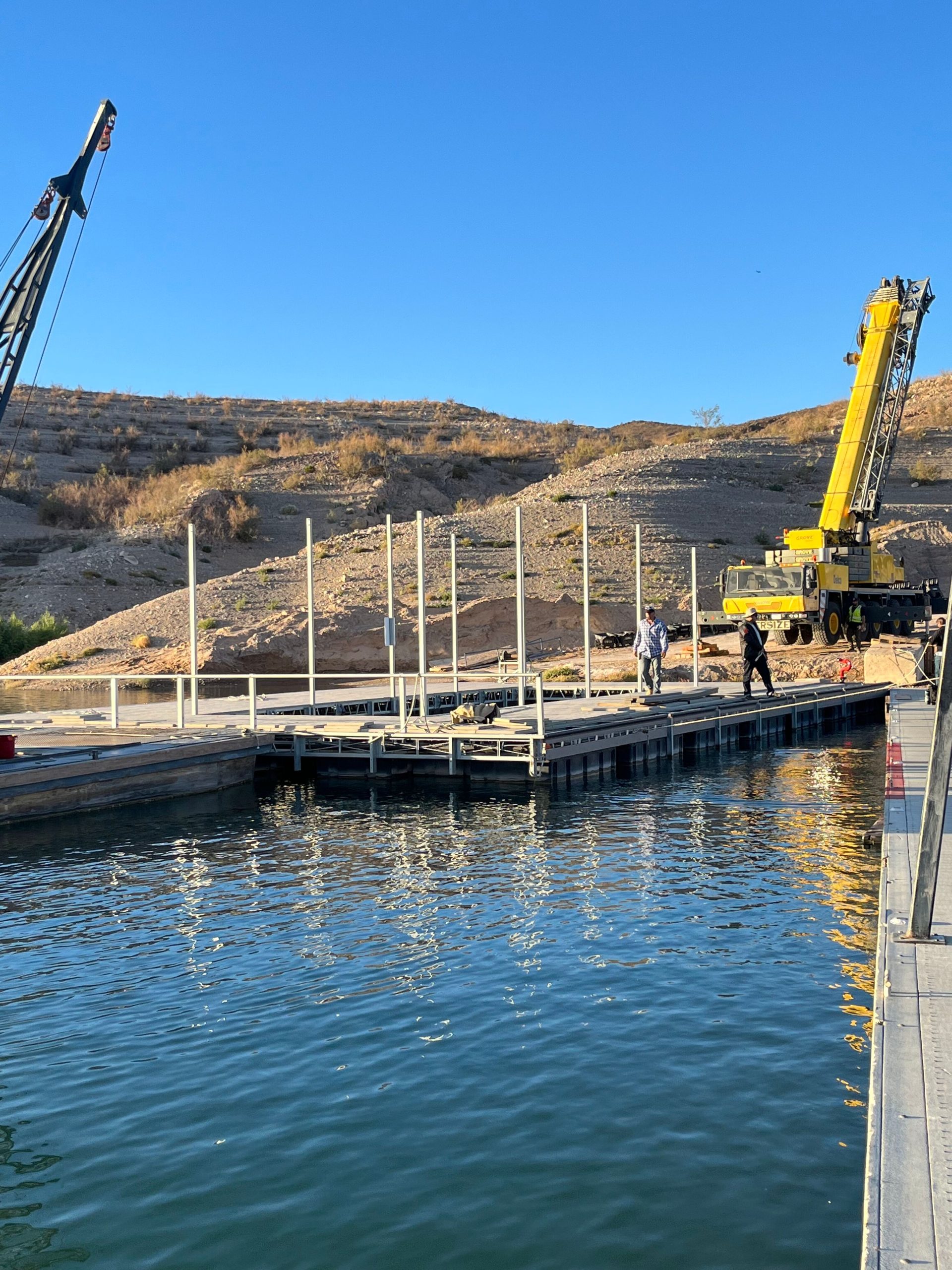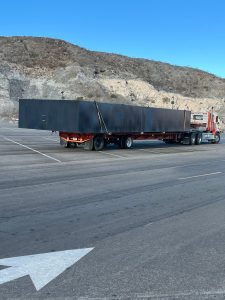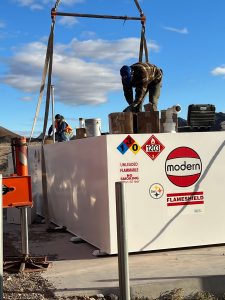
Floating Fuel Farm Keeps Boaters on the Lake
Published on January 18, 2023There are several areas within the western part of the United States that are facing low water levels due to extreme drought. The lack of water has been particularly acute in parts of Nevada, home to some of the best recreational boating on Lakes Mead and Mohave. Marinas that sit along the shores of these lakes have had to be creative in assuring boaters can continue to get out and enjoy a day on the water.
Low Water Level Dilemmas
Lake Mead is fed through snowmelt that drains into the Colorado River and onto Lake Powell. Water is released from Lake Powell into the Grand Canyon and into Lake Mead. According to NASA, over the past 20 years, meltwater has raised the lake’s surface just one or two feet while siphoning for irrigation and evaporation has lowered levels by about 20 feet annually. While this seems like a dramatic drop in water levels, the lakes faced similar low levels in the 1960s and there is still enough water to meet irrigation and residential needs, as well as the recreational needs of the 8 to 10 million people the National Park Service says visit each year.
Boating is still popular but continuing to provide access has become more challenging. The NPS moved a marina and ferry service to a new harbor, and other marinas have had to shift down the shoreline to areas of deeper water. Marinas have relied on the flexibility of floating docks that can be easily moved. But another piece of the puzzle is fuel with its underground storage landside and now ever-increasing lengths of fuel lines running out to fuel docks that are farther and farther away.
Posed with this dilemma, Lake Mead Mohave Adventures in partnership with the National Park Service recently installed a new floating fuel storage facility or floating fuel farm at Callville Bay Marina on Lake Mead. Rod Taylor vice president of Lake Mead Mohave Adventures/Guest Services LLC and Lake Mead National Recreation Area Guest Services, said the space between the facility’s underground fuel storage tank and the fuel dispensers had grown to more than a mile. That mile-long fuel line running over land was ripe for damage leaving the area exposed to the potential for a significant environmental disaster. It didn’t take long for Taylor and his partners to convince the Nevada Department of Environmental Protection that an alternative was needed, and approval was given in 2015 for installing a floating fuel farm. “The Park Service was phenomenal in helping us because they knew we needed a creative alternative and then helped convince NDEP it was necessary,” Taylor said.
Floating Fuel Farm
Floating fuel storage was not a completely new concept. Dangling Rope Marina and Wahwep Marina on Lake Powell both use floating fuel storage, but the tank sits on a barge that has to be moved down the lake to be filled by the fuel truck. Callville Bay wanted something more fixed than a barge but that could still be accessed from a shore-based fuel truck. Taylor had to find engineers and contractors who could handle the job. He worked closely with local firm Stewart Environmental on the initial design and then with the Earth Resource Group to further design and install the system.
The next step was permitting and funding. The danger the existing fuel line posed from accidental hits or washing out was enough to expedite the needed permits and to secure NPS approval for using the marina’s capital improvement account to pay for the work which topped out at $690,000. Since Callville Bay is a concessionaire of the NPS, its franchise fees of 2.5% go into a capital improvement account.
The final piece of the puzzle was contracting with a dock manufacturer to build a dock that could float a 12,000-gallon fuel tank. Taylor turned to Marine Development, Inc. or MDI. “I already had a relationship with MDI based on decades of trust, so I asked them to do the work,” he said. MDI constructed a large dock with a square hole in the middle that held rollers. A steel tank was placed in the hole to displace enough water to hold the weight of the full fuel storage tank and still float. The system offers triple protection from leaks.
The floating tank sits about 50 feet from the marina’s original fuel dispensers. A hose runs up the dock and onto land to a fill port that can be accessed by fuel trucks. Because the fuel now has only a short distance to flow the fuel line did not need to be pressurized further diminishing risk. In addition, Taylor said there is an inspection process in place to check for and remove rainwater from the tank and he’s working on an operating manual so everyone working at the marina will know how to safely handle the fueling process from truck to boat.
Moving Amenities
With the fuel situation now under control, Taylor has turned to other projects to help keep operations at the marina running smoothly despite lower water levels. Like the underground fuel storage, the original lounge and retail operations now sit well away from the boats, so Taylor is repurposing an old houseboat to be used as a new lounge and bar. With 750 slips at the marina, he recognizes the value of having amenities within easy reach of the boaters.
He is also seeking approval for a temporary boat launch using a Mobi-mat® fiberglass nylon mat to extend the ramp further out into the water. “The Park Service doesn’t have the money to extend the concrete ramp, but without the ramp boat traffic to the marina would cease to exist. The mat has good capacity and can launch boats up to 50 feet so we can continue to serve all our regular customers,” Taylor said.
Taylor, who has spent decades working in marinas along the Nevada lakes is nonplussed by the latest warnings of drought and low water and knows that while creativity is needed to provide access, the lakes are large enough to always retain areas prime for a day of boating and boaters will continue to show up.
| Categories | |
| Tags |





